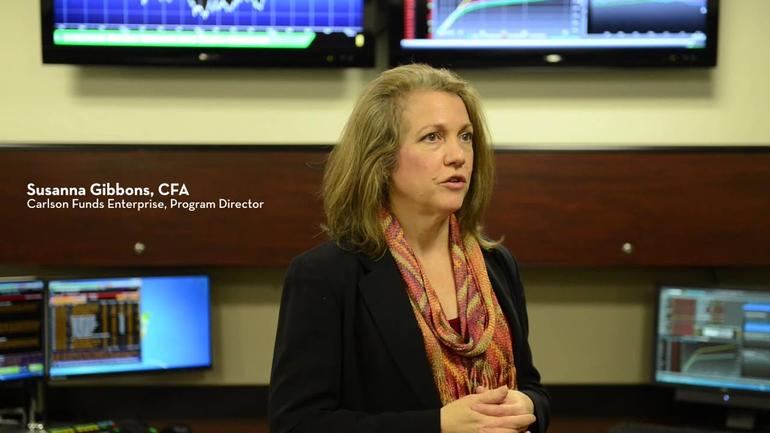MS in Finance Experiential Learning
Gain Real-World Experience
Experiential learning is a hallmark of the Carlson School and a key component of the MS in Finance program. Classroom study comes alive with experiential learning projects that challenge you to apply what you've learned for real client companies. The experience deepens your learning while simultaneously building skills employers want to see on a resume. Students often cite experiential learning as their favorite – and most valuable – part of the program.
Carlson Funds Enterprise
The Carlson Funds Enterprise (CFE) allows a select number of students the opportunity to fully manage and market over $50 million of real investment money for real clients, with real, competitive returns.
Funds Enterprise Claims #2 Spot in National SMIF Rankings
With $50 million under management, Carlson School's Funds Enterprise proudly secures the 2nd spot among the Top 25 Largest Student-Managed Investment Fund (SMIFs) nationwide.
- Center for Investment Research Ranking, 2023
Experiential Learning Options
If you are interested in investment management, you may apply to join the CFE for the experiential learning component of the MSF program, or may select from a variety of projects with client companies.

The Carlson Funds Enterprise (CFE) is a year-round asset management business, involving real-time decisions with real financial effects on its clients across the country. The CFE includes the Carlson Growth Fund and Carlson Fixed Income Fund.
You'll have exclusive access to the full CFE network of client companies, advisory board, and industry mentors. There will also be investment networking opportunities, industry events, scholarships and fellowships, case competitions, and job and internship postings. MSF students must commit to participating in the Funds Enterprise for 2 semesters.
Our past experiential learning client companies have included Fortune 500 companies across industry sectors. Investment banks, asset management firms, healthcare providers, retail companies, real estate management companies, and a variety of others have all partnered with our program for experiential learning. You'll work directly with a partner company on a semester-long project with real-world impact for your client company.

The Experiential Learning Project was one of the most valuable and unique aspect of MS in Finance program at Carlson School of Management. The program secured excellent semester-long projects with premier hedge funds and investment firms in Minneapolis, offering hands-on experience working with seasoned investment professionals. My project with Houlihan Lokey was a contributing factor in pivoting my career search, as I gravitated toward fixed income and distressed investing.
Experiential Learning Structure
Working in teams of four to six, you'll work directly with your partner companies using the knowledge, skills, and tools learned in the classroom to derive business value for your clients. Advised by faculty and staff members, you'll run your own projects from start to finish, assessing needs and devising project-specific approaches to the work.
Experiential learning projects take place across the full spring semester, allowing you to finish your MSF degree with real-world experience that'll prepare you for the full-time job market.
Examples of past experiential learning project topics
- Investment product analysis
- Asset/liability study
- Portfolio risk analysis
- Capital structure analysis
- Retail expansion or market analysis
- Division profitability analysis
- Currency, interest rate, or commodity risk assessment
- Value at Risk (VaR) analysis




